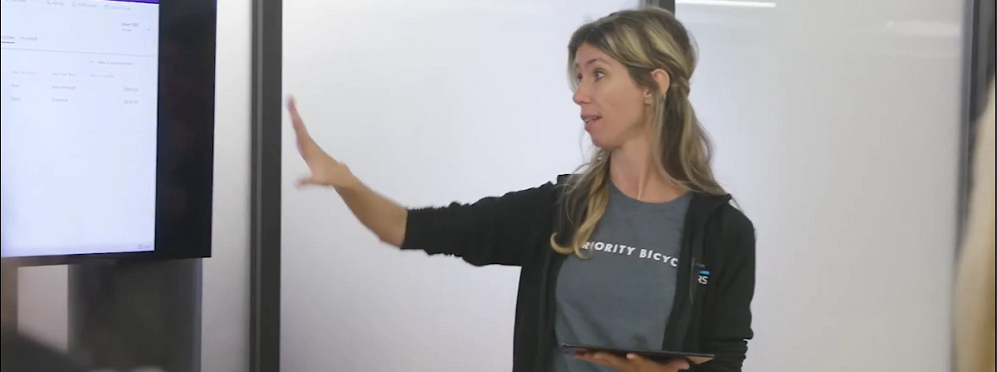Microsoft 365 Copilot Pages

It rained (or should I say poured?) new features last September, during the Power Platform Community Conference and the Microsoft Copilot Wave 2 event. I even wrote an article and recorded a video about the top announcements at the Power Platform Community Conference to make sure you wouldn’t miss out! If you haven’t read the article or watched the video yet, you can do so here. One of the features that was announced was something called Copilot Pages. This feature is part of Microsoft 365 Copilot, but Microsoft announced that this feature will also become available for the free Microsoft Copilot (for users signed in with a Microsoft Entra account) at a later date. Let’s dive in this new feature and how it will help you to be even more productive!
How does it work?
If you’ve used Microsoft 365 Copilot before, then you probably are aware that Microsoft 365 Copilot can be accessed from many different places. Users can interact with Microsoft 365 Copilot from within Microsoft Teams, Outlook and Bizchat is accessible through a browser by navigating to copilot.microsoft.com. This will take the user to Copilot in a browser, which is another place from where users can chat with Microsoft 365 Copilot. They can start asking Copilot questions related to work data, or they can switch the slider on the top of the screen to ‘Web’ which will change the source to the internet. (I did notice that there is no option to create a new Copilot Page if a user switches to the Web.) With the new Copilot Page feature users can now store information from the Copilot chat onto this page, which allows them to save certain parts of the conversation. They also have the ability to collaborate with others on this page, at the same time! What I also like about this is that users can access the chat or Copilot Page in a different app! For example, lets say they started the chat and/or Copilot page in Microsoft Teams, then had to respond to an email in Outlook, from where they can pick up where they left off in Teams or Bizchat!
Make users more productive!
Let me explain how this new feature will make your users more productive. Previously when someone chatted with Microsoft 365 Copilot, when they got a response, they would like to keep, that user would need to copy and paste the response from Microsoft 365 Copilot onto another document, like Word or PowerPoint. Copilot Pages is going to change this! Copilot Pages allow users to take information from Microsoft 365 Copilot and store this in a ‘Copilot Page’. The page will open in a side pane in Copilot, allowing the user to stay on the same screen. As the user continues to ask Copilot questions, they will decide which responses need to be added to the page. At any time, data from other sources can be added to the page as well, for example, maybe you want Copilot to extract information from a word document? That data can also be added to the Copilot Page. Oh, and don’t forget: everything on the Copilot Page is editable! Now remember that word or PowerPoint document I was referring to earlier? People usually have the need to collaborate with others when they are working on projects or creating content, and what we see a lot is folks emailing these word, power point, excel documents to others but a lot of times that meant that there were several different versions of that document floating around. Copilot pages can be shared with your coworkers, allowing the team to simultaneously work together on the same page! I am not just talking about sending a link to people to access, we also have the ability to embed the page! (I.E in an email or an appointment) No need to attach a file and manage multiple files! Any updates that are made from within the embedded Copilot page will be immediately visible from wherever the page is accessed! And of course users can go back to their Copilot page at any time, whether they are accessing it from BizChat, Teams, or even from the Loop workspace! Users who access BizChat will see a new navigation item on the sitemap on the left that is called ‘Pages’. This is one of the places where the Copilot Page can be accessed.
Create a Copilot Page
Let’s try this out! For this example I want to put together a Copilot page about RSM, that includes office locations, a short blurb about RSM, a list of office locations, and a table of any open work orders. NOTE: We can give Microsoft 365 access to Dynamics 365 data from Sales, Customer Service, Field Service, etc. I start by navigating to BizChat and I have the top switch set to ‘Work’. I will start by asking Copilot the following question: ‘Find me information on RSM.’ Copilot answers with information ‘from your company’, which is based on data in Microsoft 365, it found two Power Point presentations and a PDF. It also found information ‘From the web’, which is a short blurb about RSM. From here (If I’m happy with the data that Copilot returned) I can create a new Copilot Page by clicking ‘Edit in Pages’. This will open up the page in a side-pane on the right of the chat window. You’re notice that the header of the page is set as the name of the page, a user can change this at any time. I change it to ‘RSM Info’. I delete the data below ‘From your company’ as I don’t need that. I return to Copilot and enter: ‘Show me a list of all the RSM offices in the United States.’ Copilot returns a bulleted list with the names and addresses of RSM’s locations. I could also ask Copilot to put this information in a table format and to add a column for the phone number before I add this to a Copilot Page. Now let’s add some data from Dynamics 365 Field Service. (Make sure the Field Service plugin in Microsoft 365 Copilot is enabled.) The next thing I ask Copilot is: ‘Show me all work orders for RSM in a table. Add the following columns: Work Order Number, Service Account, Billing Account, Primary Incident Type, Work Order Type, System Status and Est. Total Amount.’

Copilot provides me with a beautiful looking table. When clicking ‘Edit in Pages’ again, the response is added to the page. The data is added to the page as blocks, so if I need to move the blocks around on the page, I can. Now let’s add some data from a document. I have a sample Word document with project details. I want copilot to extract some of that information so I can add it to the page. I enter: “Build a project using this template” and then I click the + button and select the files tab. I can either select an existing document or I can upload a document. I select my ‘Agile Project Plan template’ document that is stored in my OneDrive. Copilot shows me the requested information in a nicely formatted table. I can ask Copilot to do other things like remove columns and add columns, etc. Once I am happy with the result, I can add this to the page as well. If I want to continue working on this Copilot Page from another app (let’s say Microsoft Teams) I can do so. I open Microsoft Teams and click on the chat from the recent chat list on the right side of the screen. Then I click on the ‘Open Page’ icon on the Copilot banner. To invite other to collaborate on the Copilot page with me, I can click the ‘Share’ button on the top right side of the Copilot Page. I can choose to copy the page link, which I can then send to others to access the page, or I can choose ‘copy component’, which will generate a link that can be used to embed the Copilot Page. I then have the option to embed the Copilot page inside an email or outlook invite, and people can start to collaborate with me immediately! Wow! I am impressed, what a great new feature this is! This will allow users to put documents together very quickly, without having to spend time on finding data in different places! Let me know what you think in the comments!
Things to note
Now let’s talk a little bit about what is happening under the covers when a user creates a Copilot Page. You might have heard of Loop, which is another Microsoft Product that is part of Microsoft 365. When a user creates a Copilot Page, a loop file is created. Yes you read that right, a Copilot Page is really a Loop file! The Loop file is stored in a new user-owned SharePoint Embedded container. It is important to understand this, because everything that Loop is storing in these containers will count against the tenant’s SharePoint quota. Since Copilot Pages are .loop files, administrators can control them using Loop admin switches. BUT…if you disable Loop in your tenant, this will NOT disable Copilot Pages. Microsoft added a new switch specifically for Copilot Pages to ensure they can be more easily controlled in your organization. Please check this link for more information. I hope you enjoyed this article! Let me know what you think in the comments! Be sure to check in again next week for a new article or subscribe here to never miss another post!












Comments are Closed